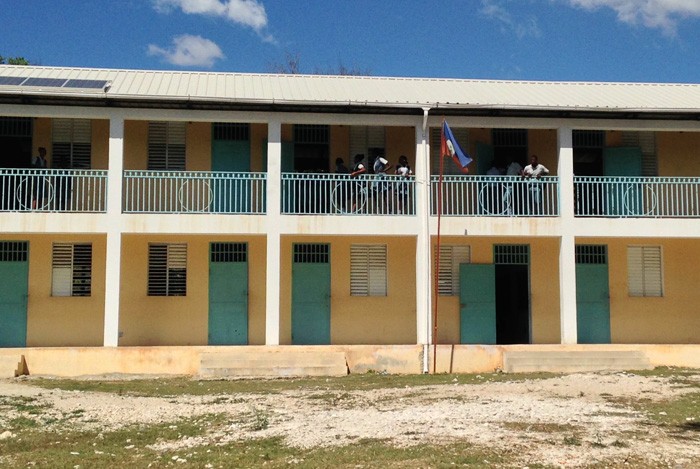
Ninety percent of the schools in Boucan Carre, located in the Central Plateau region of Haiti, do not have access to water or sanitation, as funding is generally focused on classroom construction rather than a full package of services.
A team of USAID and Partners in Health (PIH) officials, including the Agency’s Global Water Coordinator Christian Holmes, recently visited the only public high school in Boucan Carre.
This region of the country has approximately 100 primary schools of which more than 80 percent are privately run. Boucan Carre is not unusual, according to the Ministry of Education in Haiti, more than 80 percent of all schools are privately run, and 90 percent have no access to drinking water or sanitation, exposing approximately 873,000 children to waterborne diseases while in school.
When there are latrines available, such as at the high school the USAID/PIH team visited, there are often insufficient numbers to meet the needs of the student population. This isn’t surprising given that Haiti has the lowest rates of water and sanitation coverage in the western hemisphere. Fifty-two percent of Haitians live in urban areas and only 60 percent have access to potable water and 34 percent to improved sanitation. In rural areas, fewer than 50 percent have access to potable water (fewer during the dry season) and between 17 percent and 20 percent have access to improved sanitation.
In the Boucan Carre high school, there are two cement latrines for approximately 800 students.
The lack of latrines has a direct impact on girls’ school attendance. During menses girls need be able to use the latrines, and therefore will often not go to school because of the lack of access. During the team’s visit, only one of the toilets was unlocked. The other remained locked in order to dissuade the surrounding community, which also lacks basic sanitation facilities, from using the latrines. As a result, students urinate on the sidewall of the latrine.
There is housing with toilets for teachers on the school grounds, but the teachers keep them locked for their use. The teachers’ housing, like the school itself, is in need of infrastructure improvements. It has eight non-functioning water spigots on the side of the house.
An important infrastructure advancement at the school is the installation of solar panels by the USAID-funded Solar Energy Light Fund (SELF), which provides basic lighting for student classrooms.







Comment
Make a general inquiry or suggest an improvement.